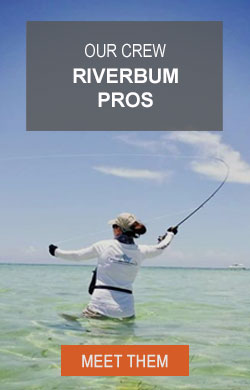How To Pick The Right Strike Indicator: 5 Factors You Should Consider
A strike indicator a tool that you use when nymphing to indicate when a fish strikes at your fly. Like any piece of fly fishing gear, when it comes to strike indicators, you want the right tool for the job.
Some strikes are no-brainers, aggressive, hard, and fast eats. Others are very subtle, soft and slow.
These subtle strikes happen more often than not, and if your indicator is appropriately sized you will see the strikes better and you will catch more fish!
Strike Indicator Sizes
Strike indicators come in all shapes, sizes, and materials.
When nymphing, your indicator should be large enough to float given the weight of your nymphing rig, but just barely. In general, you should select your indicator so that 1/3 - 1/2 of your indicator sits below the surface of the water.
That way, you’ll recognize subtle strikes sooner, allowing you to "Set!" the hook quicker and catch more fish!
I am a firm believer that a trout knows the food they just consumed isn’t real in less than a second. I equate it to us humans, when biting into a hamburger and you realize instantly when there is a piece of bone in the meat.
I’m no trout but they do spit out fake flies just as fast as they eat them.
So, the faster you can set that hook, the better.
Strike Indicator Materials
Different materials float better than others, which may also make them less sensitive.
I use a yarn indicator when fishing calmer water with smaller flies. The yarn’s buoyancy can change depending on the amount of floatant that you use.
In my experience, yarn indicators are the most sensitive to strikes. They also look the most natural from underneath the water. The shape is irregular and has a leaf like silhouette.
They come in many different colors and typically attach to your leader with a small rubber band that doesn’t cause any harm to your line.
Other spherical indicators, such as the new Oros or the cork Coros, come in several different sizes and are made from biodegradable foam or all natural cork.
Thingamabobbers are plastic air bubbles that float the highest on the water for their size.
Since different materials have different buoyancies, I recommend keeping a few different types on hand, and selecting your indicator based on each fly fishing situation.
Strike Indicator Shapes
The shape of an indicator is almost as important as the size.
Yarn, spherical, football, and teardrop are just a few of the options at your avail.
Why is the shape so important?
Because as a subtle strike occurs the indicator may turn, bounce, or tilt on the water.
Your ability to see these different movements on the water is important.
ANYTIME these occur you need to “SET””!
Sometimes you are simply bouncing on the bottom but sometimes there is a fish on the end fighting back.
My favorite indicator is the new Oros for this very reason.
Even though they’re spherical, what I really like about the Oros is that they allow you to identify a turn or twist with two different colors.
The Oros indicator’s halves can be mixed allowing different color configuration and because the line runs straight through the indicator it also tilts during a subtle strike.
Strike Indicator Colors
Anglers often ask me about indicator color.
First and foremost, the color is important because you need to be able to see the indicator.
Regardless of the size, shape, or color, if you can’t see it, then you won’t see any strikes and you won’t catch any fish.
So, pick a color that is easy for you to spot on the water.
There are all kinds of different objects floating down a river in all kinds of colors. You don’t need to be concerned about spooking fish with a brighter indicator unless you are fishing a tiny, gin-clear, calm stream.
Remember you are nymphing, which means the fish are looking down for their food, not up at the surface.
Your Casting Situation
Lastly, casting comes into play.
Some indicators move through the air better than other ones.
Therefore, you should take your indicator’s profile into consideration and make sure that it won’t impede your cast.
Just like you must be able to see the indicator, you must be able to cast the indicator.
Picking A Strike Indicator: Final Thoughts
Find an indicator that matches the conditions and flies you are using.
Just remember that size, shape, color, and material all come into play.
Also, I recommend keeping a good selection of indicators whenever you’re on the water. That way, you’ll be able to size down, try different material, or a different shape and catch more fish!







